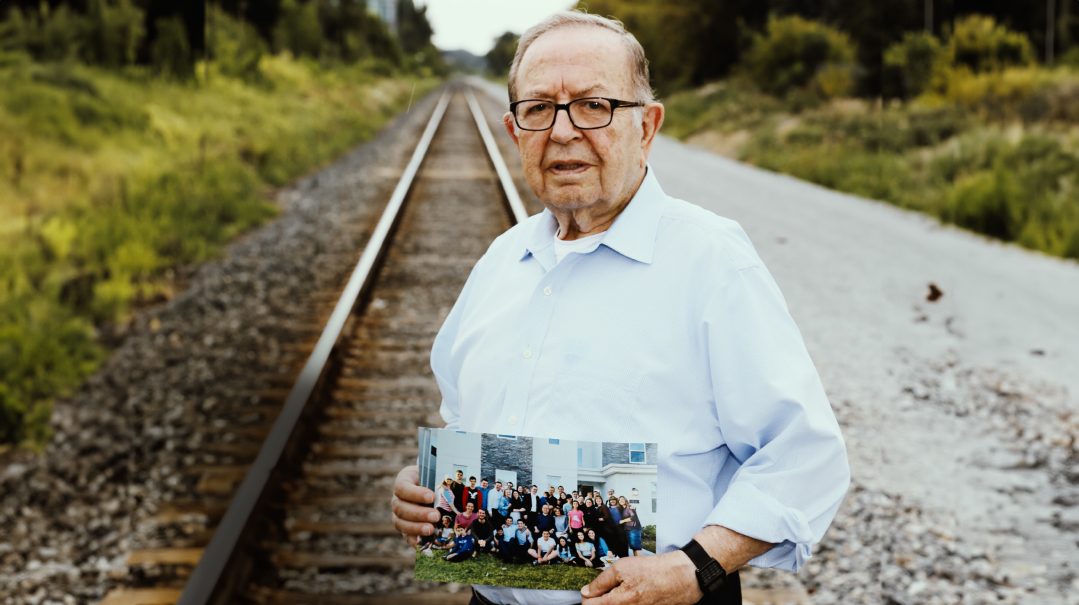With an Outstretched Hand

Newly revealed footage of a Nazi train jolted Dr. Mark Nusbaum back to the past

Photos: Gary Alderson
Little Shloimeleh Nussbaum spent his childhood either hiding from the Germans or behind barbed wire in Bergen-Belsen. Years later, after starting over and building a blessed life and a next generation, newly released archived footage of the famed liberation train on which he identified himself has brought up the memories, the horror, and the gratitude to the One Who had been there all along
This past summer, the US National Archives released never-before-seen footage of the liberation of a Nazi train holding some 2,500 passengers. The silent three minute, 29 second clip featured black-and-white images of a group of feeble men, women, and children in what appears to be a valley, with some sitting, others standing, and many lying in a deep slumber.
In the background is a long passenger train with exhaust billowing from the smokestack.
At one point, the camera turns to a scene of dozens of people clamoring to receive something being handed out by an American soldier.
The video was posted online along with some background information. The passengers were former prisoners of Bergen-Belsen and were being transported to Theresienstadt. However, the train was forced to stop due to attacks by the Allied forces. In desperation, the Nazis sought to lead the group of Jews to the Elbe River to be shot and drowned. But, in the nick of time, American tanks arrived and they were soon liberated.
It’s a fascinating episode— yet another insight into the horrors, and the miracles, of the Holocaust.
For Toronto-based Dr. Mark Nusbaum, the video opened a floodgate of emotion. Today the dentist-turned-businessman runs a successful company named Continent-Wide Enterprises Limited. While life has taken him a long way since his childhood incarceration in Bergen Belsen, he recalls practically every detail of that train’s journey and the events leading up to it.
And while viewers of this valuable historical record can only see the soundless images of black and white, Dr. Nusbaum graciously fills in the brushstrokes of pain, fear, euphoria, and gratitude.
N
ot long after Dr. Nusbaum begins telling his story, his executive assistant enters the office and emotionally exclaims, “look who’s here!” In walks a tall, slender young man – clearly Dr. Nusbaum’s grandson. Dr. Nusbaum leaps to his feet and, with tears visibly filling his eyes as he places both hands upon his grandson’s head and whispers the full Bircas Kohanim.
I learn that the young man’s name is Ariel Kruger, he lives in the central Israeli city of Modiin, attends a hesder yeshivah, and currently serves in the IDF. He had just landed in Toronto, having especially come to visit Zeidy.
I begin by sharing this interlude because, although it’s not part of Dr. Nusbaum’s narrative, it tells the entire tale.
Those tears in Dr. Nusbaum’s eyes were some 80 years in the making; the love that he effuses comes from the vanquishing of those who know only hatred.
And should they have had their way, the grandson who stands before him would have never come into being.
Ariel is part of a beautiful chapter of a story that began eighty years ago and might have ended so, so differently.
Oops! We could not locate your form.







